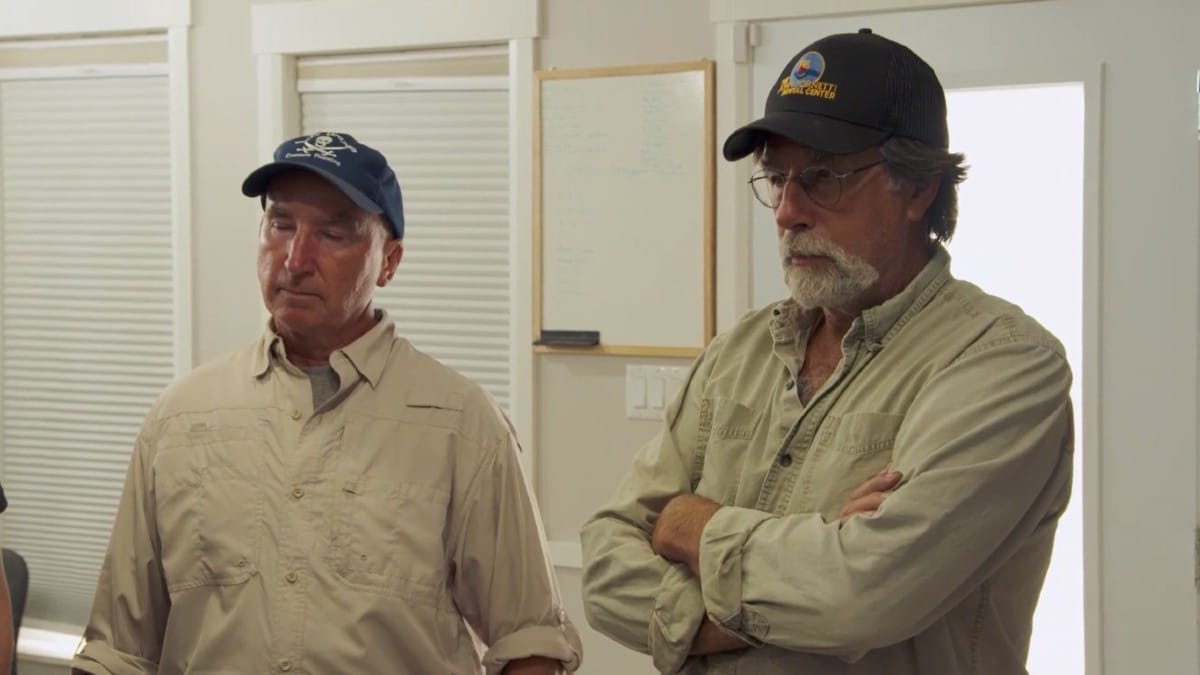
The Curse of Oak Island team has found fresh evidence that points to either Spanish conquistadors or Portuguese sailors having visited the island and depositing a quantity of gold treasure.
Things on Oak Island have been hotting up recently. Despite the Nova Scotian authorities telling them to cease operations in an important part of the island, the team has been making some really significant finds, mostly involving gold in the Money Pit area. And recently, they came across some ancient gun stones and got some fascinating expert analysis.
A couple of weeks ago, metal detectorist Gary Drayton was wandering through Lot 16, near the swamp, when he happened to spot a little round stone ball. The eagle-eyed Gary noticed immediately that it appeared to be an old gun stone, kinda like a mini cannonball fired from ancient small cannons. At the time, he tagged and bagged it for future study.
On last night’s episode, the team handed it to Dr. Ian Spooner for his expert analysis. His first thought was, “uh, it’s not natural,” his second thought was, “this is not from here.” Which means they need to find out where it came from.
The other guys had noticed straight away that it was very similar to the gun stone ball discovered last year within the spoils pulled out of a borehole in the Money Pit area. The balls differed in color, but apart from that, they were almost identical in size, texture, and density.
The Oak Island guys decided to consult an expert geologist
At this point, Ian suggested he take the two artifacts to another expert who could identify their origin. Marty channeled his inner Captain Picard: “make it so,” he told Ian.

Later, the guys were joined by a video link to the War Room by expert geologist Dr. Robert Raeside, who seemed to have all the answers on the stones’ composition. He described the gun stones as olivine-bearing rocks with olivine gabbro and basalt, meaning they came from volcanic material.
Raeside continued by confirming that the stone could not have come from Nova Scotia and was most commonly found in volcanic island chains; his best bet was either the Canary Islands (Spanish territory) or the Azores (Portuguese territory) both located on the eastern side of the Atlantic.
More evidence of Spanish conquistadors?
Gary was first to verbalize what everyone was thinking; those islands are heavily associated with early trans-Atlantic travel by both the Spanish and Portuguese Empires, e.g., conquistadors.
From the 15th century to the 18th, the Portuguese and the Spanish were constant rivals searching to carve up and loot the natural treasures and resources of South America. The guys have long speculated that a Spanish or Portuguese captain may have stolen and hidden gold on Oak Island to either keep it from their rivals or perhaps their own countryfolk.
The chemical composition of recent finds of gold in the Money Pit has indicated that it was Spanish treasure with a South American origin. And recently, a historian told the team that they thought the cobbled stone roadway was built by the Portuguese.
Long may the juicy discoveries continue.

The Curse of Oak Island airs at 9/8c on History.
Brown is a good name! I never miss the Show and even love watching reruns!! Love seeing the history changed with every small find and the information shared after it is examined. I do not get bored watching it. I love History Archeology and treasure hunting. Great team on Oak Island and love that the whole family can watch and you never have to be concerned about foul language.
Thank you for keeping us Acorns up to date.